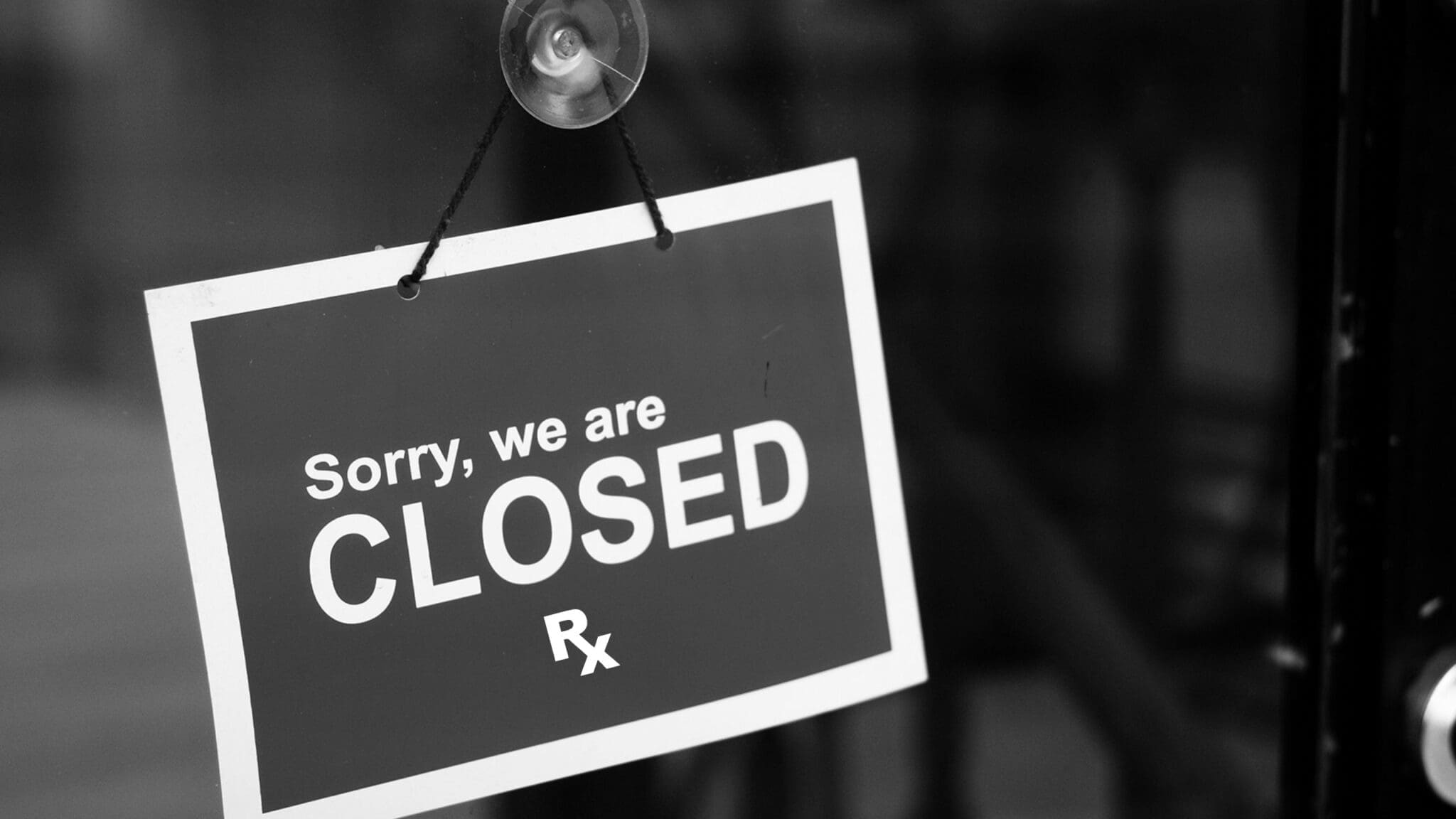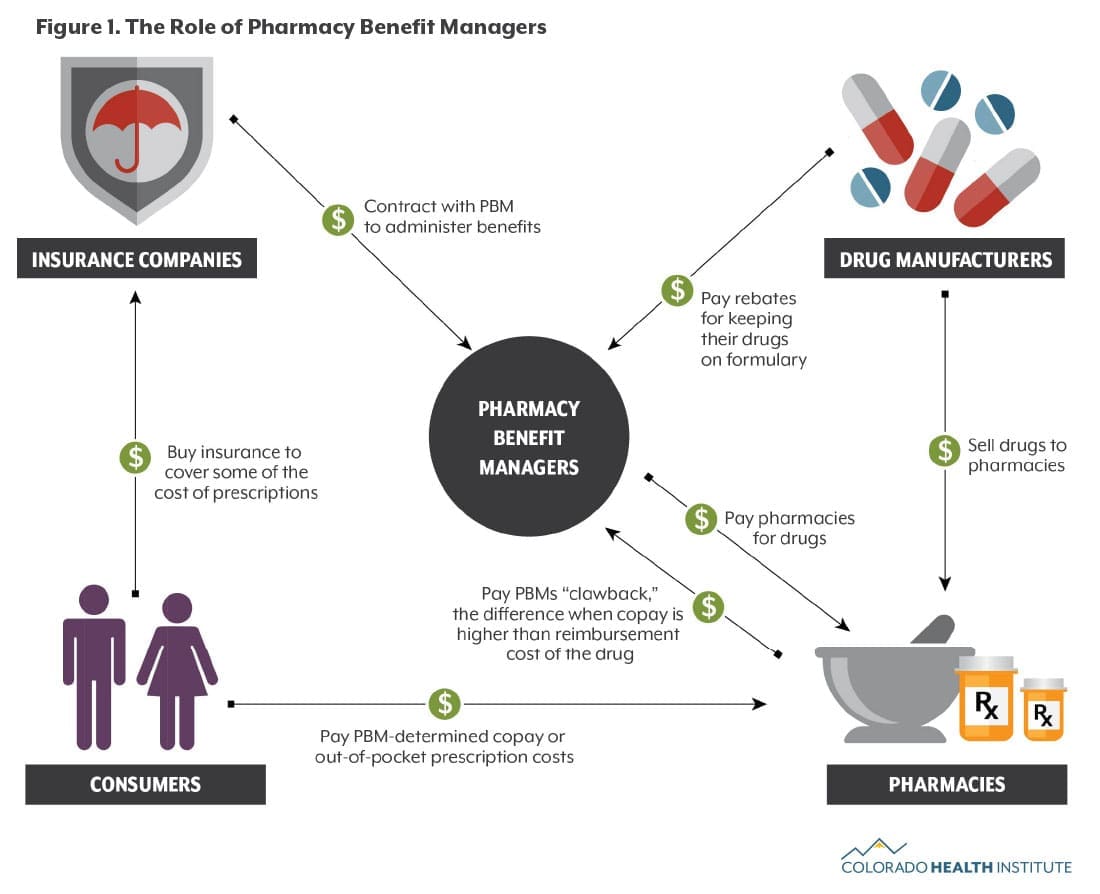The pharmacy landscape is undergoing significant transformation, marked by the rising trend of pharmacy closures across the nation. While the media tends to focus on the large chains like CVS, Walgreens, and Rite Aid, Independent pharmacies are also struggling, with over half of the 7,000+ closures since 2019 impacting these vital entities. The rest of this blog will explore why pharmacy closures are occurring, how owners and staff can effectively respond, and how a tool like C2 Keep can support these efforts. This isn’t just about businesses shutting down; it’s about reduced access to essential medications and healthcare services, the rise of pharmacy deserts, and an erosion of the crucial role pharmacists play in their communities.
The Unspoken Culprit Behind Pharmacy Closures?
Many point to Pharmacy Benefit Managers (PBMs) as the primary driver behind this troubling trend of pharmacy closures. Originally introduced in the 1960s and gaining traction in the 1980s, PBMs were designed to serve as intermediaries between drug manufacturers, insurance companies, and pharmacies. However, over time, their role has evolved and expanded significantly.
Today, PBMs wield considerable influence over drug pricing, medication access, and pharmacy reimbursement rates. According to Henry Miller and the American Council on Science and Health (ACSH), the lack of federal and state oversight allows PBMs to “steer patients toward more expensive medications that have higher out-of-pocket costs, impose hefty markups on cheaper drugs, and extract more in hidden fees.” Ultimately, this leads to higher costs for consumers.
For pharmacies, the financial pressure is even more direct. Declining reimbursement rates have led to thousands of pharmacy closures nationwide. In many cases, pharmacies are now losing money each time they dispense certain medications because the PBM reimbursement is lower than the actual cost of the drug. While this issue initially hit smaller independent pharmacies the hardest, even major pharmacy chains are beginning to feel the impact.
How Pharmacies Can Respond Effectively
Despite the staggering number of pharmacy closures, there are several things pharmacists and staff can do to not only survive, but thrive in this environment. This section explores 4 key actions pharmacies can take to meet the increasing demand for pharmacy services while still making a profit.
1. Streamlining Workflows for Efficiency
When profit margins are tight, operational efficiency becomes essential. One of the most effective ways to avoid pharmacy closures is by investing in affordable, pharmacy-focused technologies. By leveraging tools such as C2 Keep, pharmacies can streamline operations, reduce costs, and free up valuable time to focus on patient care.
Here are a few key ways pharmacies are using technology to overcome operational challenges:
- Embrace Digital Solutions: Shifting from manual processes to digital systems such as C2 Keep can dramatically increase accuracy and save time. Digital tools also help pharmacies stay agile in the face of industry changes, such as evolving product offerings or staffing shortages. The time saved can be redirected toward patient consultations and expanding clinical services.
- Integrate Systems for Seamless Operations: Choosing platforms that integrate with existing pharmacy management systems, wholesalers, and other tools helps eliminate data silos. This not only improves efficiency but also reduces the risk of manual errors and streamlines day-to-day workflows.
- Improve Inventory Transparency: Real-time inventory tracking gives pharmacy teams a clear and accurate view of current stock. This visibility supports smarter ordering decisions, minimizes discrepancies, prevents overstocking or stockouts, and keeps inventory levels optimized.
2. Diversifying Offerings Beyond Dispensing
To stay competitive and financially stable, many pharmacies are expanding their offerings beyond traditional prescription dispensing. While these added services may not fully offset the losses from shrinking reimbursement rates, they can provide critical support during challenging times.
- Offer Personalized Patient Care: Building meaningful relationships with patients and offering tailored advice fosters loyalty and satisfaction, offering a clear advantage over impersonal online services.
- Expand Clinical Services: According to Waypoint, a growing number of pharmacies are offering services like medication therapy management (MTM), immunizations (including flu, shingles, and more), chronic disease management (such as diabetes and hypertension monitoring), point-of-care testing, and direct primary care (DPC) programs. These services not only prevent pharmacy closure but also open up new revenue streams.
- Consider Other Specialized Services: Based on the unique needs of your community, consider adding services such as compounding, medication synchronization, or adherence packaging. If other pharmacies in the area are closing, look into the services they provided and assess whether it’s feasible to incorporate those offerings into your own operations.
3. Engaging with the Community and Healthcare Providers
Pharmacies thrive on their connection to the community. Strengthening these ties and building collaborations with other healthcare providers can enhance value proposition, attract patients and create new business opportunities.
- Actively Participate in Community Events: Sponsor local sports teams, support local charities, and participate in health initiatives to boost the pharmacy’s visibility and foster goodwill.
- Collaborate with Local Prescribers: Establish referral networks with physicians, nursing homes, and other healthcare organizations to create a steady stream of new patients and ensure coordinated care.
- Address Healthcare Access Gaps: In areas facing pharmacy closures, consider offering delivery services or enhancing accessibility for patients with transportation challenges.
4. Prioritize Vigilant Regulatory Compliance
In today’s financial climate, failing to comply with regulatory protocols can be a fast track to pharmacy closure. Yet maintaining accurate and compliant records for controlled substances takes time, and time is something most pharmacy teams struggle to find.
Fortunately, there are practical strategies pharmacies can use to stay compliant while still focusing on patient care:
- Implement a Digital Compliance Solution: Manual logbooks often slow down pharmacy operations. By switching to a digital controlled substance compliance solution like C2 Keep, pharmacies can streamline recordkeeping, improve accuracy, and free up valuable time for direct patient interaction.
- Stay Informed on Regulatory Changes: Continuously monitor changes to federal and state regulations, including those related to the Controlled Substances Act (CSA), drug pricing, and insurance policies.
- Prepare for Audits in Advance: Use tools that simplify compliance reporting and audit preparation. Features like automated report generation and easy access to key documents can save time and reduce the stress that often comes with audits.
- Strengthen Security and Accountability: Choose systems with built-in safeguards that encourage staff accountability, help prevent diversion, and quickly identify discrepancies. These tools contribute to a safer environment while eliminating the risk of pharmacy closure.
C2 Keep: Your Partner in Navigating the Future

In these challenging times, pharmacies need reliable tools to navigate the complexities of compliance and optimize their operations. C2 Keep is a fully integrated cloud-based solution specifically designed to support independent pharmacies. Built by former pharmacy director Roland Achenjang who experienced the frustrations of manual compliance firsthand, C2 Keep offers a suite of features to help your pharmacy not just survive, but thrive.
C2 Keep empowers you with:
- Perpetual Inventory Management: C2 Keep’s web-based applications tracks controlled substance activity data from wholesalers, pharmacy systems, and personnel activities while maintaining the industry’s most accurate perpetual inventory records.
- Diversion Risk Reduction: C2 Keep’s data storage structure and safety checks make diversion harder within pharmacies.
- Greater Insights and Visibility: C2 Keep provides visibility into each tracked NDC and employee activity to facilitate telling a complete “story” of NDC activities, and quickly identifying and resolving discrepancies.
- Controlled Substance Act (CSA) Compliance: C2 Keep exceeds the “separate perpetual inventory” requirement of the CSA, and the only solution allowing for storage and quick retrieval of associated order files like the DEA 222 forms and others.
- Audit-Ready Reports: C2 Keep creates DEA-Compliant reports like the Annual, Biennial, and Inventory Total Reports in seconds, enhancing pharmacies’ audit preparedness and readiness.
- Streamlined Operations: C2 Keep’s fully integrated and accurate inventory activity tracking and storage helps pharmacy staff operate more efficiently, allowing them to spend more time caring for patients than on non-value-added services.
The trend of pharmacy closures presents a significant challenge, but it also underscores the enduring importance of community pharmacies. By embracing efficiency, diversifying services, engaging with their communities, and prioritizing compliance with the support of innovative solutions like C2 Keep, independent pharmacies can adapt, thrive, and continue to be vital pillars of healthcare for years to come.

